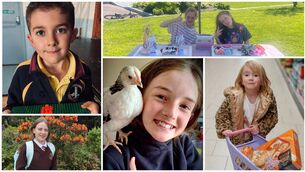Joanna Fortune: My grandchild gets upset when it's time to leave the playground

Dr Joanna Fortune: "Essentially, make it fun to get it done. She may still protest, but if you can stay calm and consistent, she will learn through repetition that playground time must end."
What a lucky little girl to have all of this playtime with her grandparent, and indeed you with her. Small children love the playground. It has so much variety with different things to try, challenges to master, (healthy) risks to be taken and other children to meet and befriend. All of this is good for her development.
However, transitions are not easy for young children to manage, so they often struggle with ending one fun task (playing on the playground) and doing something not so fun (going home for lunch/nap, etc).
- If you have a question for child psychotherapist Dr Joanna Fortune, please send it to parenting@examiner.ie










